The black-and-white warbler (Mniotilta varia) is a species of New World warbler, and the only member of its genus, Mniotilta.[2] It breeds in northern and eastern North America and winters in Florida, Central America, and the West Indies down to Peru. This species is a very rare vagrant to western Europe.[2]
Relative to other New World warblers, it is not well studied.[3]
Description
The black-and-white warbler is 11 cm (4.3 in) to 13 cm (5.1 in) in length with a mass of 8 g (0.28 oz) to 15 g (0.53 oz) grams.[3][4] Wingspan ranges from 7.1 to 8.7 in (18–22 cm).[5]

True to their name, black-and-white warblers are black and white in colour. Both sexes have black and white crowns with a white eyebrow, black streaking on a white belly, black wings with two white wing bars, a black tail, a black-and-white streaked back, streaky undertail coverts, and grey-black legs and feet. Breeding males have a black-and-white streaked throat and black cheek, while females have a grey cheek and a white-cream coloured throat and sides. First fall males are very similar to adult females in colour and patterning, while first fall females resemble adult females but with less streaking and a more noticeable buffy wash. Juveniles are heavily spotted, but are similar to first fall individuals otherwise.[4]
This species is 12 cm (5 in) long and weighs 11 g (0.39 oz).[6][3] The summer male black-and-white warbler is boldly streaked in black and white, and the bird has been described as a flying humbug.[7] Each wing is black with two white wing bars. Female and juvenile plumages are similar, but duller and less streaky than males.
This warbler can be confused with the blackpoll warbler (Setophaga striata). The blackpoll warbler is also black and white in its summer plumage, but has a solid black cap. The black-and-white warbler can also be confused behaviourally with the pine warbler (Setophaga pinus) and yellow-throated warbler (Setophaga dominica).[4][8]
Taxonomy
Linnaeus described the black-and-white warbler (Mniotilta varia) in 1766.[9][8] This warbler is a species of New World warbler or wood warbler (family Parulidae), and is the only member of its genus due to its unique foraging adaptations.[3]
It is known to hybridize with the cerulean warbler (Setophaga cerulea) and Blackburnian warbler (Setophaga fusca). The black-and-white warbler is thought to be closely related to the genus Setophaga.[4]
No subspecies are known.[3][4]
Etymology
The genus name comes from the Ancient Greek mnion, meaning "seaweed", and tillo, "to pluck". Vieillot mistranslated the first word, mnion as "moss". The specific varia is from the Latin varius, meaning "variegated".[10]
Habitat and distribution
The black-and-white warbler is a migratory species, breeding in North America and wintering in North and South America. It is typically found in deciduous forest in its breeding range, but becomes more of a habitat generalist in the non-breeding season.[3]

Habitat
The black-and-white warbler occupies a broad niche, and is found in a variety of habitats.
In its breeding habitat, it prefers mature forest, but will occupy successional and second growth forest. Preferred forest types include deciduous and mixed forest, and this warbler sometimes occupies swampy forest.
During migration, this species prefers forest to other land cover types and is frequently found in riparian areas.
In its wintering habitat, it can be found in a variety of land cover types, from mangroves to wet, dry, and cloud forest. It occupies both successional and mature forest.[3] It has also been noted to winter in shade coffee plantations and gardens.[3][11]
Males are territorial in both their summer and winter habitats.[12][13]
Distribution
The black-and-white warbler breeds in northern and eastern North America. It ranges from the Northwest Territories to the northwest and Newfoundland and Labrador to the northeast, to North Carolina to the southeast and Texas to the southwest. This species is migratory, wintering in Florida, Central America, the West Indies and northern South America down to Peru.[3] The IUCN estimates the extent of occurrence, or range, to be 11,500,000 km2.[9]
This species occurs as a vagrant in Iceland, Ireland, Faeroes, and the UK.[4][14]
Conservation status
The IUCN classifies the black-and-white warbler as Least Concern due to its large range and population size. However, its population is decreasing.[9] Habitat loss and degradation, especially forest fragmentation, are the main factors contributing to the species' decline. If habitat loss continues, in either or both summer or wintering habitat, the species may continue to decline in the future.[15][16] Pesticides such as fenitrothion and phosphamidon have contributed to the species' decline in the 1970s,[17] and others such as chlorinated hydrocarbons may continue to have an effect.[3]
Behaviour
Vocalization

The black-and-white warbler has a high-pitched song, described as a repeating wee-see that is repeated at least 6 times in succession. It has a chip call as well as a seet-seet call that is sometimes given in flight.[4]
Its song is a high see wee-see wee-see wee-see wee-see wee-see or weesa weesa weetee weetee weetee weet weet weet. It has two calls, a hard tick and a soft, thin fsss.[2][6]
Diet
This bird feeds on insects and spiders, and, unlike other warblers, forages like a nuthatch, moving up and down tree trunks and along branches.[6]
The black-and-white warbler feeds in a manner similar to a nuthatch or a creeper. It forages on tree trunks and limbs to feed on insects below the bark's surface.[8] Its short legs and long hind toe are adaptations to this foraging method.[8] The black-and-white warbler is unique among warblers in its time spent foraging on tree trunks and inner branches.[3] This bird also gleans, like many warblers, for insects.[4] Its diet is composed of insects and other arthropods, including lepidopteran larvae, beetles, ants, and spiders.[18] During migration and breeding, this warbler relies heavily on lepidopteran larvae.[19]
During migration, the black-and-white warbler sometimes joins mixed flocks to feed.[8]
Reproduction
It breeds in broadleaved or mixed forest, preferably in wetter areas. Black-and-white warblers nest on the ground, laying 4–5 eggs in a cup nest.[2]
The black-and-white warbler is of the first warblers to arrive to its spring breeding grounds.[8] In the southernmost range of its breeding habitat, it can begin breeding mid-April. Males are territorial and defend their territory, both by singing and chasing competitors away. When a female arrives in a male's territory, he pursues her in an effort to breed. The male may display by flapping his wings.[3]
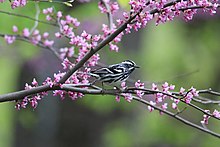
The nest is cup-shaped, often located on the ground among roots or against a tree, or in crevices on tree stumps. The species prefers to nest in damp areas. The nest is constructed with grassy material, bark, and dry leaves, and lined with softer material such as moss and hair. The female is responsible for most of the nest-building.[3] The female lays 4-5 eggs,[2] which are light brown and speckled with darker brown. The female begins incubating once the last or second-to-last egg is laid. Incubation lasts 10 to 12 days, and is done solely by the female. During incubation, the female is sometimes fed by the male.
Both parents care for the nestlings. The young fledge after 8 to 12 days, and stay around the nest while they improve their flight ability. During this time, the parents remain nearby.[3]
This species generally produces one brood per year.[20]
Black-and-white warbler nests are sometimes parasitized by the brown-headed cowbird (Molothrus ater).[3][8]
Gallery
References
- ^ BirdLife International (2016). "Mniotilta varia". IUCN Red List of Threatened Species. 2016: e.T22721758A94729210. doi:10.2305/IUCN.UK.2016-3.RLTS.T22721758A94729210.en. Retrieved 11 November 2021.
- ^ a b c d e Curson, Jon; Quinn, David; Beadle, David (1994). New World Warblers. London: Christopher Helm. pp. 158–159. ISBN 978-0-7136-3932-2.
- ^ a b c d e f g h i j k l m n o Kricher, John C. (1995). "Black-and-white Warbler (Mniotilta varia)". The Birds of North America Online. doi:10.2173/bna.158.
- ^ a b c d e f g h Dunn, Jon; Garrett, Kimball (1997). A field guide to warblers of North America. National Audubon Society, National Wildlife Federation, Roger Tory Peterson Institute. Boston: Houghton Mifflin Co. pp. 411–418. ISBN 978-0395783214. OCLC 36549138.
- ^ "Black-and-white Warbler Identification, All About Birds, Cornell Lab of Ornithology". allaboutbirds.org. Retrieved 30 September 2020.
- ^ a b c Sibley, David Allen (2000). The Sibley Guide to Birds. New York: Alfred A. Knopf. p. 446. ISBN 978-0-679-45122-8.
- ^ Willems, Tomas; de Boer, Marijke N.; Saulino, James T. (September 2017). "Offshore surprises: new at-sea bird records for Suriname (2013–2015)" (PDF). Revista Brasileira de Ornitologia. 25 (3): 202. doi:10.1007/BF03544397. Retrieved 3 November 2021.
- ^ a b c d e f g Harrison, Hal H. (1984). Wood warblers' world. New York: Simon and Schuster. pp. 205–211. ISBN 978-0671477981. OCLC 10430019.
- ^ a b c IUCN (2016). "Mniotilta varia: BirdLife International". IUCN Red List of Threatened Species. doi:10.2305/iucn.uk.2016-3.rlts.t22721758a94729210.en.
- ^ Jobling, James A. (2010). The Helm Dictionary of Scientific Bird Names. London, United Kingdom: Christopher Helm. pp. 257, 398. ISBN 978-1-4081-2501-4.
- ^ Sherry, Thomas W.; Johnson, Matthew D.; Williams, Kelly A.; Kaban, Jordana D.; McAvoy, Caroline K.; Hallauer, Amanda M.; Rainey, Shannon; Xu, Sen (2016). "Dietary opportunism, resource partitioning, and consumption of coffee berry borers by five species of migratory wood warblers (Parulidae) wintering in Jamaican shade coffee plantations". Journal of Field Ornithology. 87 (3): 273–292. doi:10.1111/jofo.12160. ISSN 1557-9263.
- ^ Anderson, K.S.; Maxfield, H.K. (1967). "Warbler returns from southeastern Massachusetts". Bird-Banding. 43 (3): 218–233. doi:10.2307/4511388. JSTOR 4511388.
- ^ Skutch, A. F. (1971). A naturalist in Costa Rica. University of Florida Press.
- ^ Ed Betteridge (21 September 2023). "Sighting". Birda. Retrieved 19 April 2024.
- ^ Galli, Anne E.; Leck, Charles F.; Forman, Richard T. T. (1976). "Avian Distribution Patterns in Forest Islands of Different Sizes in Central New Jersey". The Auk. 93 (2): 356–364. JSTOR 4085050.
- ^ Whitcomb, B. L.; Whitcomb, R. F.; Bystrak, D. (1977). "Long-term turnover and effects of selective logging on the avifauna of forest fragments". Am. Birds. 31: 17–23.
- ^ Pearce, P. A.; Peakall, D. B.; Erskine, A. J. (1976). "Impact on forest birds of the 1975 spruce budworm spray operation in New Brunswick". Can. Wildl. Serv. Progress Note 62.
- ^ Bent, A. C. (1953). "Life histories of North American wood warblers". U.S. Natl. Mus. Bull. 203.
- ^ Graber, J. W.; Graber, R. R. (1983). "Feeding rates of warblers in spring". Condor. 85 (2): 139–150. doi:10.2307/1367247. JSTOR 1367247.
- ^ Peck, George K.; James, Ross D. (1983). Breeding birds of Ontario : nidiology and distribution. Toronto: ROM. ISBN 978-0888542885. OCLC 10850118.
External links
- Black-and-white warbler (Mniotilta varia) – USGS Patuxent Bird Identification InfoCenter
- Black-and-white warbler species account – Cornell Lab of Ornithology
- Stamps[usurped] at bird-stamps.org
- Black-and-white warbler vocalizations at Florida Museum of Natural History
- "Black-and-white warbler media". Internet Bird Collection.
- Black-and-white warbler photo gallery at VIREO (Drexel University)
- Black-and-white warbler sounds Archived 6 October 2017 at the Wayback Machine- Macaulay Library
|
Help
|
|
Browse
|
Search
|
Create the page "Black and White Warbler" on this wiki!
 Black and White Warbler Source: Chester A. Reed, The Bird Book, 1915. Received from http://www.gutenberg.org/etext/30000....(240 × 321 (64 KB)) - 18:54, 2 January 2016
Black and White Warbler Source: Chester A. Reed, The Bird Book, 1915. Received from http://www.gutenberg.org/etext/30000....(240 × 321 (64 KB)) - 18:54, 2 January 2016 English Black-and-white Warbler (Mniotilta varia) stated in: iNaturalist reference URL: https://www.inaturalist.org/photos/72460469 retrieved: 29 May...(2,048 × 1,422 (511 KB)) - 11:47, 29 May 2022
English Black-and-white Warbler (Mniotilta varia) stated in: iNaturalist reference URL: https://www.inaturalist.org/photos/72460469 retrieved: 29 May...(2,048 × 1,422 (511 KB)) - 11:47, 29 May 2022



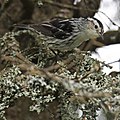
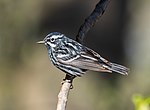
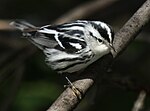
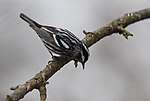



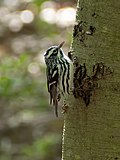




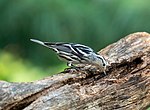
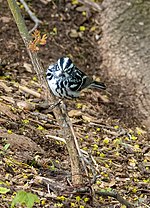
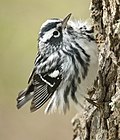
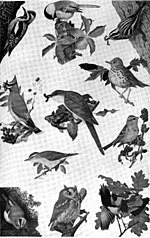

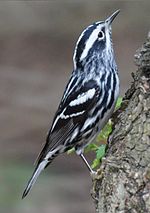


Recent Comments